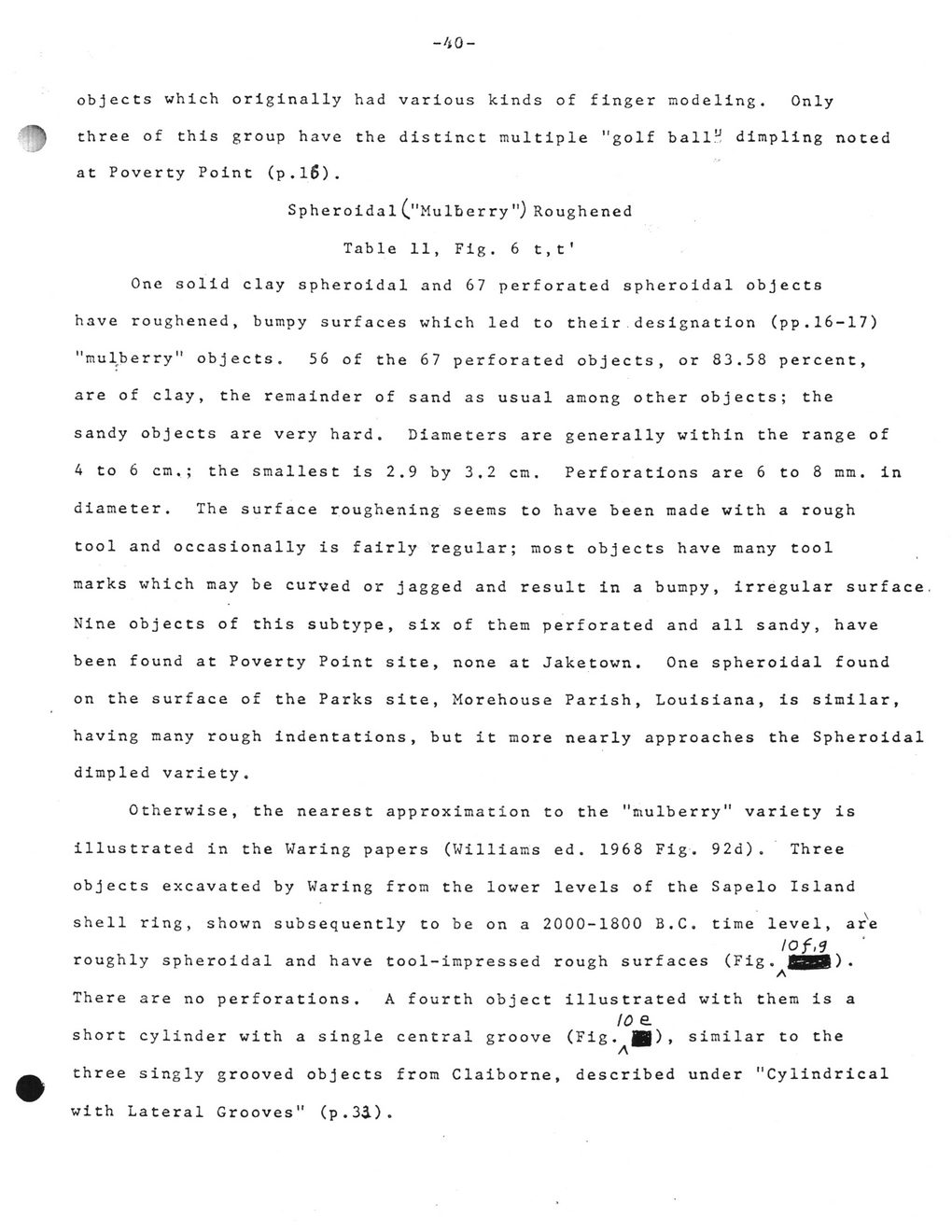This text was obtained via automated optical character recognition.
It has not been edited and may therefore contain several errors.
objects which originally had various kinds of finger modeling. Only three of this group have the distinct multiple "golf bal 1u dimpling noted at Poverty Point (p.l6). Spheroidal (."Mulberry") Roughened Table 11, Fig. 6 t,t ' One solid clay spheroidal and 67 perforated spheroidal objects have roughened, bumpy surfaces which led to their.designation (pp.16-17) "mulberry" objects. 56 of the 67 perforated objects, or 83.58 percent, are of clay, the remainder of sand as usual among other objects; the sandy objects are very hard. Diameters are generally within the range of 4 to 6 cm.; the smallest is 2.9 by 3.2 cm. Perforations are 6 to 8 mm. in diameter. The surface roughening seems to have been made with a rough tool and occasionally is fairly regular; most objects have many tool marks which may be curved or jagged and result in a bumpy, irregular surface. Nine objects of this subtype, six of them perforated and all sandy, have been found at Poverty Point site, none at Jaketown. One spheroidal found on the surface of the Parks site, Morehouse Parish, Louisiana, is similar, having many rough indentations, but it more nearly approaches the Spheroidal dimpled variety. Otherwise, the nearest approximation to the "mulberry" variety is illustrated in the Waring papers (Williams ed. 1968 Fig. 92d). Three objects excavated by Waring from the lower levels of the Sapelo Island shell ring, shown subsequently to be on a 2000-1800 B.C. time level, are lOf.S roughly spheroidal and have tool-impressed rough surfaces (Fig. JQB ) ? A There are no perforations. A fourth object illustrated with them is a to e. short cylinder with a single central groove (Fig. j0), similar to the A three singly grooved objects from Claiborne, described under "Cylindrical with Lateral Grooves" (p.3d).

Walden 051